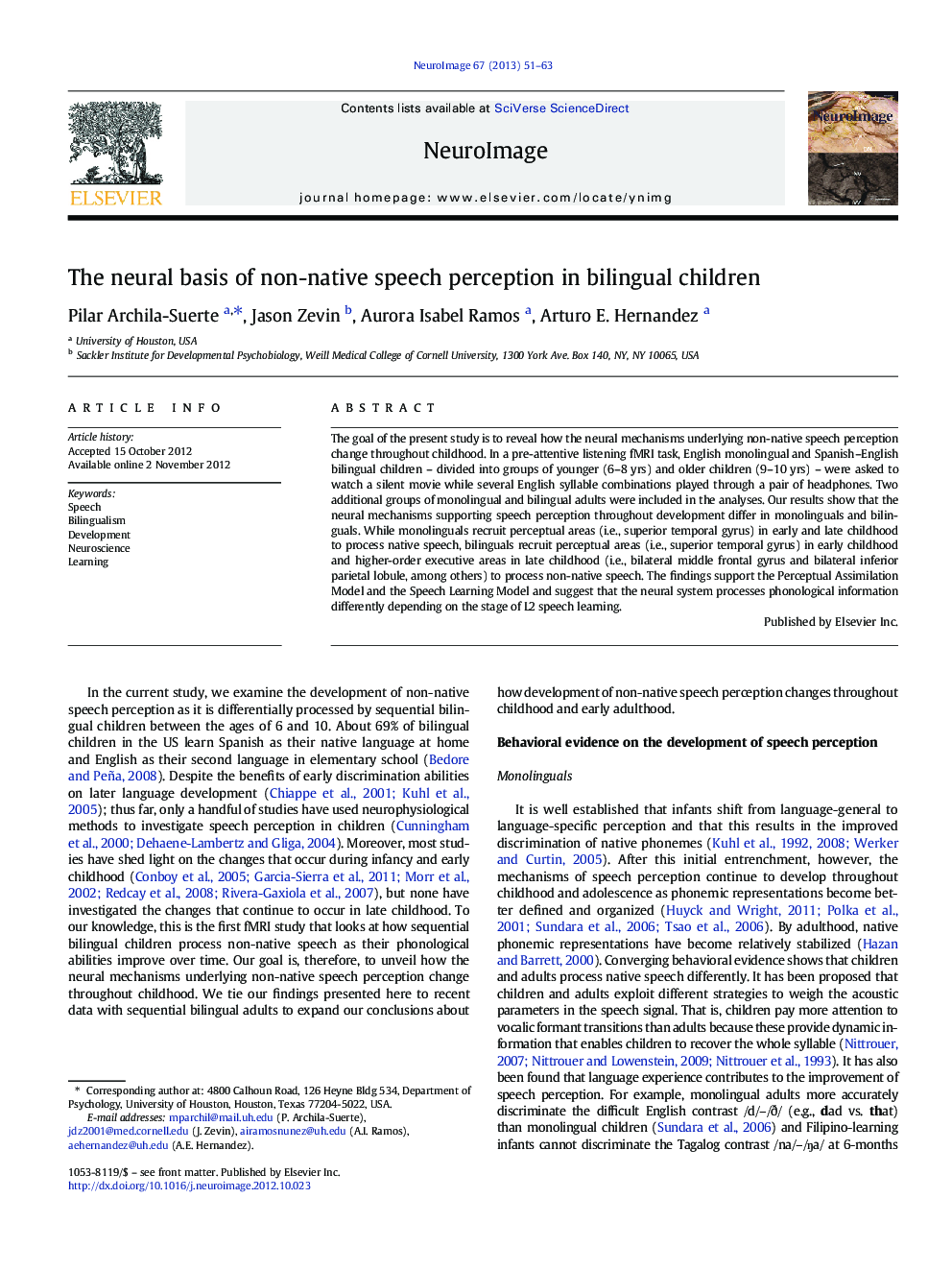| Article ID | Journal | Published Year | Pages | File Type |
|---|---|---|---|---|
| 6029939 | NeuroImage | 2013 | 13 Pages |
The goal of the present study is to reveal how the neural mechanisms underlying non-native speech perception change throughout childhood. In a pre-attentive listening fMRI task, English monolingual and Spanish-English bilingual children - divided into groups of younger (6-8Â yrs) and older children (9-10Â yrs) - were asked to watch a silent movie while several English syllable combinations played through a pair of headphones. Two additional groups of monolingual and bilingual adults were included in the analyses. Our results show that the neural mechanisms supporting speech perception throughout development differ in monolinguals and bilinguals. While monolinguals recruit perceptual areas (i.e., superior temporal gyrus) in early and late childhood to process native speech, bilinguals recruit perceptual areas (i.e., superior temporal gyrus) in early childhood and higher-order executive areas in late childhood (i.e., bilateral middle frontal gyrus and bilateral inferior parietal lobule, among others) to process non-native speech. The findings support the Perceptual Assimilation Model and the Speech Learning Model and suggest that the neural system processes phonological information differently depending on the stage of L2 speech learning.
⺠All children have phonemic representations of English sounds /a/ /o/ and /u/. ⺠Neural mechanisms of speech perception differ in monolinguals and bilinguals. ⺠Monolingual children (younger and older) show bilateral activity of the STG. ⺠Younger bilingual children engage the STG to process speech. ⺠Older bilingual children engage a network of fronto-parietal areas.
